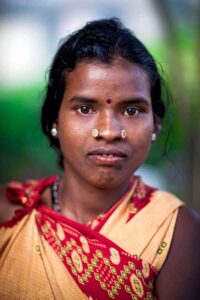Goa Tribes: Guardians of Ancient Traditions and Cultural Riches
Introduction:
Nestled along the picturesque coastline of India’s western shores lies the vibrant state of Goa, renowned for its sun-kissed beaches, lively festivals, and rich cultural heritage. Beyond the bustling tourist hubs and colonial remnants, Goa is also home to a diverse array of indigenous tribes whose traditions, lifestyle, and marriage ceremonies offer a glimpse into the region’s ancient past. In this exploration, we delve deep into the cultural tapestry of Goa’s tribes, from their unique customs and traditions to the sacred rituals that bind families and communities together in a bond as enduring as the sands of time.
I. Historical Context and Origins:
The tribal communities of Goa trace their roots back to ancient times, long before the arrival of colonial powers or the spread of Hinduism and Christianity in the region. Believed to be descendants of the original inhabitants of the Konkan coast, these indigenous groups have preserved their distinct cultural identity through centuries of social, political, and economic change.
Among the prominent tribes of Goa are the Kunbis, Gaudas, Velips, and Dhangars, each with its own dialect, customs, and way of life. While the Kunbis and Gaudas are primarily agrarian communities, the Velips and Dhangars traditionally engage in occupations such as fishing, hunting, and animal husbandry, reflecting the diverse ecological landscapes of the region.
II. Lifestyle and Social Structure:
Central to the lifestyle of Goa’s tribal communities is a deep connection with the land, shaped by centuries of interaction with the natural environment. Agriculture forms the backbone of their economy, with farmers cultivating rice, coconut, cashew, and other crops in terraced fields nestled amidst the lush greenery of the Western Ghats.
In addition to farming, many tribal households also engage in traditional crafts such as pottery, weaving, and basketry, passing down these artisanal skills from generation to generation. This diversified livelihood strategy not only ensures self-sufficiency but also fosters a sense of pride and cultural continuity among community members.
Socially, Goa’s tribal societies are organized along kinship lines, with extended families playing a central role in social, economic, and religious affairs. Elders hold positions of authority and respect within the community, serving as custodians of oral history, customary law, and traditional knowledge passed down through the ages.
III. Cultural Practices and Traditions:
The cultural landscape of Goa’s tribes is characterized by a rich tapestry of rituals, festivals, and ceremonies that mark the passage of time and the cycles of nature. From harvest festivals celebrating the bounty of the land to rites of passage commemorating birth, puberty, marriage, and death, these customs serve as a vital link between the past and the present, reaffirming communal bonds and ancestral ties.
One of the most cherished traditions among Goa’s tribes is the annual “Sao Joao” festival, celebrated with great fervor in June to mark the onset of the monsoon season. During this vibrant event, young men adorned with floral wreaths plunge into overflowing wells and rivers in a symbolic gesture of purification and fertility, accompanied by music, dance, and feasting.
IV. Marriage Ceremony: A Sacred Union:
At the heart of tribal life in Goa lies the institution of marriage, a sacred union that not only binds individuals but also serves as a cornerstone of social cohesion and continuity. Unlike urbanized societies where marriage customs may vary widely, Goa’s tribal communities adhere to age-old traditions and rituals that emphasize familial ties, community consent, and cultural preservation.
The process of courtship and marriage begins with the matchmaking efforts of parents, elders, and village leaders, who take into account factors such as lineage, compatibility, and social status. Once a suitable match is found, negotiations ensue between the families regarding the terms of the union, including dowry, bride price, and ceremonial arrangements.
The wedding ceremony itself is a colorful and elaborate affair, steeped in symbolism, tradition, and religious significance. It typically takes place in the ancestral village or a communal gathering space adorned with festive decorations, floral garlands, and traditional attire.
V. Conclusion: Sustaining Tradition Amidst Modernity
In conclusion, the tribal communities of Goa serve as custodians of an ancient cultural heritage that continues to thrive amidst the pressures of modernity and globalization. Through their enduring traditions, sustainable lifestyles, and sacred rituals such as marriage ceremonies, they offer valuable insights into alternative ways of living in harmony with nature and each other.
As Goa undergoes rapid urbanization and socio-economic transformation, it is imperative to recognize and respect the cultural diversity and indigenous knowledge systems that have sustained these communities for millennia. By supporting initiatives for cultural preservation, environmental conservation, and inclusive development, we can ensure that Goa’s tribes continue to flourish and contribute to the rich tapestry of India’s cultural mosaic for generations to come.